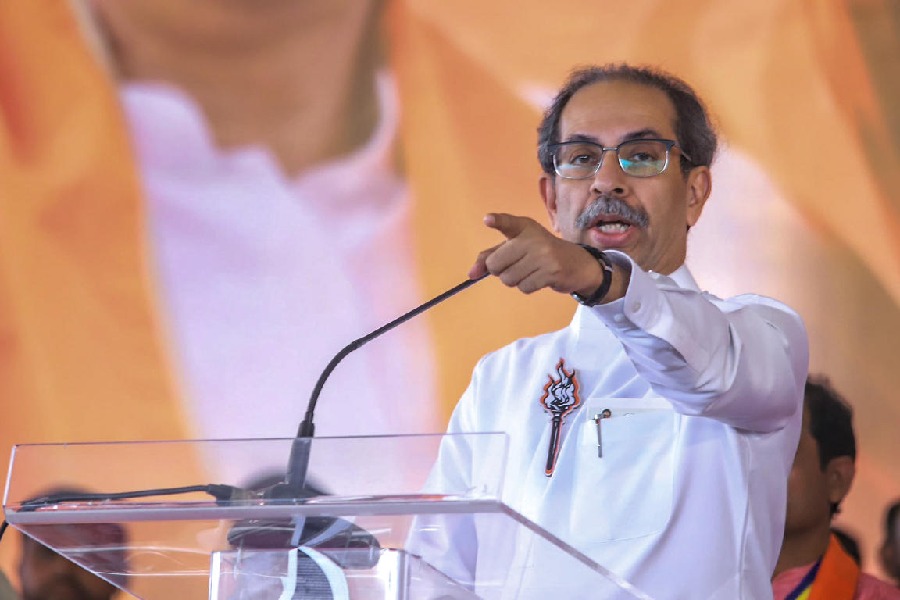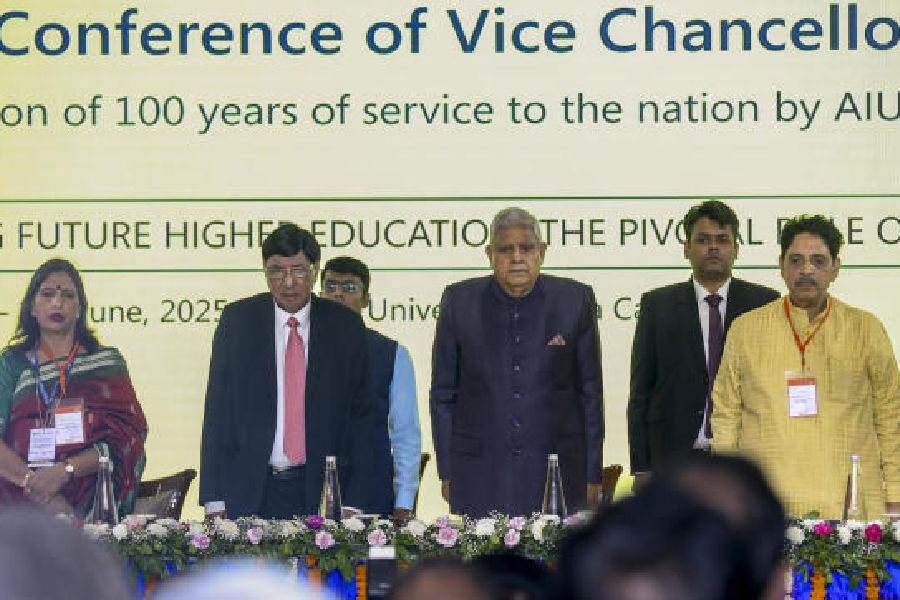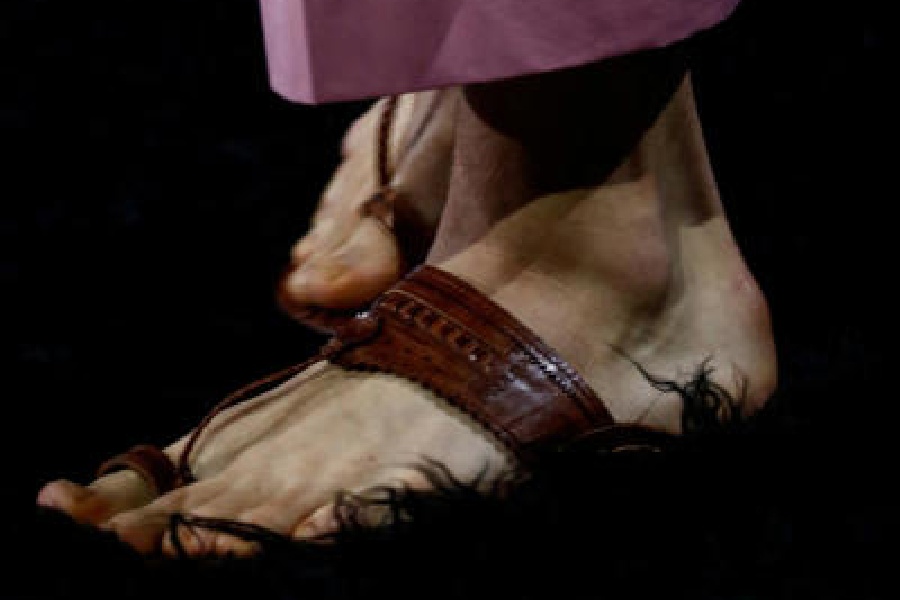 |
In the spirit of Arthur Golden’s Memoirs of a Geisha, Mirza Ruswa’s novel was about the life and times of Ameeran, a lovelorn tawaif. It needed the deft hands of a poet like Muzaffar Ali to breathe poetry into just another period piece about a golden-hearted courtesan. His Umrao Jaan not only looked beautiful, it felt the same. And a lot had to do with Khayyam-Shahryar’s musical gems. Dil cheez kya hai, In aankhon ki masti, Justuju jiski thi and Yeh kya jagah not only captured the myriad moods of melancholy, it actually transported you to 19th-century Lucknow and Kanpur kothas, where Umrao Jaan was oozing ada.Isssshhh! What has J.P. Dutta done?! Insomniacs look no further. Pay Rs 200 for three hours of valium-sprayed babel. Bad enough to demand a Sidhuism: No loss, only gloss! Dutta has mixed up a brothel with a battlefield and bombarded us with one listless ghazal after the other. What was he thinking while placing those Abhishek-Ash love songs back to back? Neither do they sound good (sorry, Anu Malik) nor do they take the story forward. Here is where Dutta missed the Farhan trick. A Dil cheez kya hai or In aankhon ki masti could have, maybe, salvaged things — at least for five minutes out of the 180. A defining scene early on in the original Umrao Jaan was of young Ameeran being rejected as a domestic help in a royal house because she was dark, a subplot Dutta conveniently blacks out because of Ash. This pain of rejection at every corner of life from then on is reflected in every glance of Rekha. She never cries till the very end but behind every turn, every swing and every nod, there is an inner pain that touches the soul. Like her tears, Rekha could hold herself back in every scene of Umrao Jaan. The magic of Rekha’s Umrao were woven around her sense of enigma, her perfect body language, her poise, her restraint. And through all her pathos, she made an alluring temptress, playing into Gauhar Mirza’s (Naseeruddin Shah) hands, rallying around dacoit Faiz Ali (Raj Babbar), loving the Nawab Sultan (Farooque Sheikh) with all her heart.Much like Taal and Chokher Bali, Umrao Jaan revolves around Ash, with the other characters turned into mere props. From the first frame to the last, Madame Rai’s green eyes shed copious tears but you hardly feel her hurt. The sense of doom is missing... largely because Ash becomes an object of maudlin pity. There is no zest for life in her character, as if a rudaali ready to burst into tears at the slightest provocation. And how, pray, can a tawaif afford to act like an achyut kanya? She shrieks at every man’s touch (apart from Nawab Abhishek, of course). Come on, give us a break! Aishwarya does put in a lot — her Urdu diction is spot on and some of her dance moves mesmerising — but much like the mystery of the missing ethos in the film, her character’s pathos is nowhere to be found. Ash puts it best: Which Umrao? Whose jaan? What ada?The Nawab-Umrao romance in Umrao Jaan 1981 is an important sub-plot in the film, but not the plot. Beautifully pitched, Farooque and Rekha exchange notes on shayri and there is born the romance that brings the two as much pleasure as it brings pain. It may be the love story of a tawaif (randi in commonspeak, a word used more than once in the film to deliberately dehumanise) and takes place in kothas, but there is an innate sense of innocence in the Nawab-Umrao romance. And that’s because Farooque Sheikh doesn’t carry any tag with him. The helplessness, the vulnerability, the angst... the love story holds the film together.
As integral to the film as Farooque’s Nawab Sultan is the brilliant Naseeruddin Shah as the cheeky charmer Gauhar Mirza. There is a constant inner turmoil between his feelings for Umrao and his struggle for sustenance in the kotha. And who better than Naseer to change colours like a chameleon?
Even Raj Babbar’s Faiz Ali is so intriguing. He wants to say so much to Umrao but knows that his dacoit background will be revealed if he opens his mouth or tries poetry. There is a clear character graph from a ruthless dacoit to a platonic lover and that too in just a few scenes.
What Muzaffar Ali did best was bring the kotha culture of Lucknow alive with his mise-en-scene, a brilliant blend of bright and bleak. And why not? Art director Banshi Chandra Gupta had done Satyajit Ray’s Shatranj Ke Khiladi just four years before Umrao Jaan.For J.P. Dutta, Umrao Jaan’s life has only one focal point — her feelings for Nawab Sultan — and her life journey has only one destination — Nawab Sultan. Maybe Ash and Abhishek were so much in love during the making of the movie that the Ruswa novel read different to Dutta. But where is the love on screen? Forget chemistry, the romantic banter between Abhishek and Ash is perfect material for Scary Movie 5. It’s that funny!
You soon end up admiring their costumes (stunning work by Anna Singh and Bindiya Dutta) and the ornate sets (the ever-reliable Bijon Dasgupta) rather than bother about what they are saying or doing (they do so little, anyway!).
After his scorching act in Sarkar and his cool cut in Kabhi Alvida Naa Kehna, Abhishek in Umrao Jaan is a huge disappointment. With a body language suggesting he’s straight out of the sets of Bluffmaster!, he hopes his glances will do the trick. But alas! Watch out for the scene when he is drunk. A bit of Baap B, a bit of Devdas SRK, Abhishek is like a cow without a cowbell, meandering into mediocrity.
But then, compared to Puru Rajkumar (Gauhar) and Suniel Shetty (Faiz Ali), Abhishek’s performance is worthy of an Oscar. Yes, they are that bad.
But the one lady who rises above the script is Shabana Azmi. As Khannum Sahib, the brothel owner, she registers a knockout performance. Very differently played from her mother Shaukat Kaifi in the Muzaffar Ali film, Shabana shows what great actors can do from ordinary, repeat ordinary, material.











